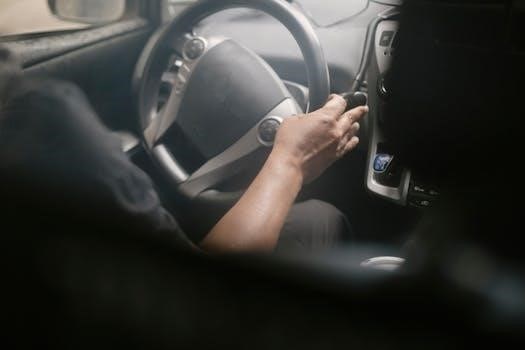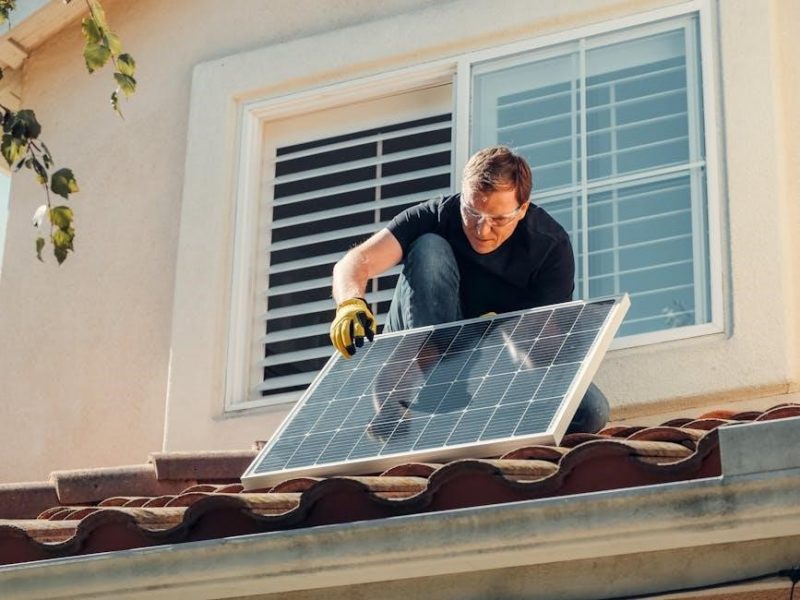Leviton Motion Sensor Manual⁚ A Comprehensive Guide
Welcome to the Leviton Motion Sensor Manual! This comprehensive guide provides you with the knowledge to effectively use your Leviton motion sensor. Discover its features, installation, programming, troubleshooting, and applications for residential and commercial settings.
Leviton motion sensors offer state-of-the-art technology paired with sleek aesthetics for optimal lighting and motor load management. These energy-saving sensors are designed with either Auto-On or Manual-On (Vacancy) switching capabilities. With a wide selection available, Leviton provides models engineered to control various loads including LED, CFL, incandescent, halogen, fluorescent, and motor loads. These sensors enhance convenience by automatically turning lights on or off based on detected motion. They also boast a broad 180-degree field of view, providing substantial coverage area. Leviton motion sensors are backed by a 5-year warranty, ensuring quality and reliability.
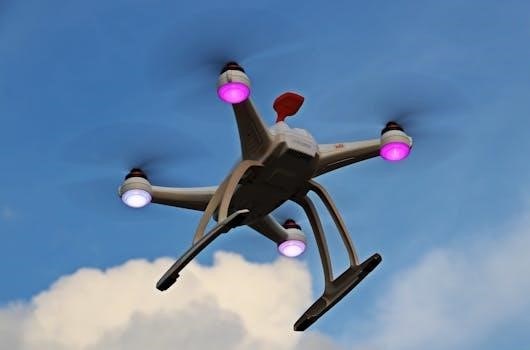
Leviton Motion Sensor Features and Benefits
Explore the key features and benefits of Leviton motion sensors. From auto-on/manual-on options to load compatibility and coverage area, understand how these sensors optimize convenience, energy savings, and lighting control for diverse applications.
Auto-On vs. Manual-On (Vacancy) Switching
Leviton motion sensors offer two distinct switching modes⁚ Auto-On and Manual-On (Vacancy). Auto-On sensors automatically turn lights on when motion is detected, providing immediate illumination upon entering a space. Vacancy sensors, on the other hand, require manual activation, promoting energy conservation by ensuring lights are only on when needed. These sensors automatically turn lights off when motion is no longer detected. Choosing between these modes depends on your specific needs and energy-saving goals. Auto-on offers convenience, while manual-on maximizes energy efficiency and complies with regulations like California Title 24.
Load Compatibility (LED, CFL, Incandescent, Halogen)
Leviton motion sensors are engineered for broad load compatibility, accommodating various lighting types. They seamlessly control LED, CFL, incandescent, and halogen bulbs, providing flexibility in lighting choices. It’s essential to verify the sensor’s wattage and voltage ratings to ensure they align with the connected lighting fixtures. Overloading the sensor can lead to malfunction or damage. Some models are also compatible with magnetic low voltage (MLV) and electronic low voltage (ELV) systems. Always consult the sensor’s specifications for specific load limits to guarantee safe and reliable operation with your chosen bulbs.
Coverage Area and Field of View
Leviton motion sensors provide a specific coverage area, typically expressed in square feet, and a field of view, measured in degrees. The coverage area defines the space the sensor can effectively monitor for motion. A wider field of view allows the sensor to detect movement across a broader area, often 180 degrees. Consider the dimensions of the room or area where the sensor will be installed to select a model with adequate coverage. Multi-sensor applications can expand coverage in L-shaped rooms. Ensure the sensor’s placement maximizes its field of view and effectively detects motion within the desired space.
Installation Guide for Leviton Motion Sensors
This section provides a comprehensive guide to installing Leviton motion sensors. Learn about wiring requirements, single-pole configurations, and 3-way setups to ensure correct and safe installation of your motion sensor.
Wiring Requirements (Neutral Wire)
A neutral wire is typically required for the proper installation and functionality of most Leviton motion sensors. This wire provides a return path for the electrical current, ensuring the sensor can operate effectively. Without a neutral wire, the sensor may not function correctly or at all. Newer Leviton motion sensors are designed to control LED, CFL, incandescent, halogen, fluorescent, or motor loads, but still require a neutral connection. Verify the specific wiring requirements for your sensor model in the product documentation to ensure a safe and successful installation, and avoid potential electrical hazards.
Single Pole and 3-Way Configurations
Leviton motion sensors offer versatile wiring options to accommodate different switching needs, including single pole and 3-way configurations. A single pole configuration involves controlling a light fixture from one location using the motion sensor. For 3-way configurations, which allow controlling a light fixture from two locations, the motion sensor can be paired with a standard 3-way switch or a DD0SR switch companion. Ensure proper wiring according to the provided diagrams for the specific configuration you are implementing. Correct wiring is critical for the sensor to function as intended and to avoid potential electrical issues.
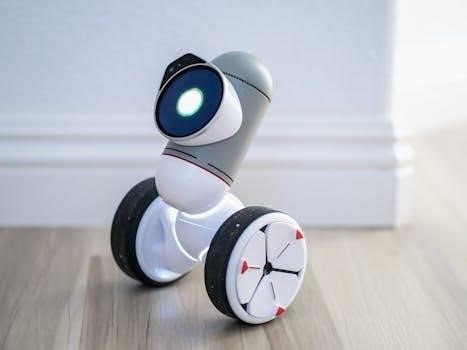
Programming and Settings Adjustment
Fine-tune your Leviton motion sensor with adjustable settings. Customize the timer for desired durations, adjust sensitivity to motion, and calibrate ambient light settings. Refer to the following sections for detailed instructions on each adjustment.
Timer (Time Out) Setting
The timer setting on your Leviton motion sensor determines how long the lights stay on after motion is no longer detected. Adjusting the timer allows you to optimize energy savings and convenience. Longer time-out periods are suitable for areas with frequent activity, while shorter durations are ideal for infrequently used spaces. To program, locate the timer adjustment dial or buttons, usually behind the faceplate. Use a small screwdriver or your fingers to select the desired time-out duration. This setting ensures the lights turn off promptly when the area is vacant, conserving energy and reducing unnecessary illumination.
Sensitivity Adjustment
Leviton motion sensors come equipped with a sensitivity adjustment feature, allowing you to fine-tune the sensor’s ability to detect movement. Increasing the sensitivity makes the sensor more responsive to subtle motions, while decreasing it reduces the likelihood of false triggers from pets or environmental factors. To adjust, locate the sensitivity dial or buttons, usually accessible behind the sensor’s faceplate. Experiment with different sensitivity levels to find the optimal setting for your specific environment. Properly calibrating the sensitivity ensures reliable motion detection without unwanted activations, enhancing the sensor’s performance and minimizing energy waste in your space.
Ambient Light Setting
The ambient light setting on your Leviton motion sensor allows you to customize when the sensor activates the lights based on the surrounding light levels. This setting prevents the lights from turning on during daylight hours, conserving energy and extending bulb life. Adjust the setting to your preference, so the light turns on only when it is dark enough. Typically, this involves using a dial or buttons to set a threshold. Some models may have a learning mode to automatically determine the ambient light level. This feature ensures optimal performance and energy savings in diverse lighting conditions, adapting to seasonal changes.
Troubleshooting Common Issues
Encountering problems with your Leviton motion sensor? This section addresses common issues, providing solutions for lights not switching on and dealing with motion detected beyond the intended sensing range.
Lights Not Switching On
If your Leviton motion sensor isn’t activating the lights, several factors could be at play. Begin by ensuring that motion is within the sensor’s range; move closer to the switch to test this. Adjusting the ambient light setting, making it lighter or darker depending on the room’s conditions, can also resolve the issue. Verify that the wiring is correct, with a neutral wire properly connected. Also, check the load compatibility to see if the load is LED, CFL, incandescent, halogen or motor loads. Resetting the device might be required, but always consult the manual first.
Motion Beyond Sensing Range
A common issue with motion sensors is detecting motion beyond the intended sensing range. Evaluate the sensor’s coverage area and field of view to ensure it aligns with your room’s dimensions. Obstructions in the sensor’s line of sight can hinder its performance, so clear any obstacles blocking its view. If using multiple sensors, confirm they are correctly configured for multi-sensor application. Adjust the sensor’s sensitivity settings, increasing it for larger spaces or decreasing it to avoid false triggers. Consider relocating the sensor to a more optimal location, ensuring it captures the desired area effectively.

Leviton Motion Sensor Applications
Leviton motion sensors offer versatile applications in both residential and commercial settings. These sensors enhance convenience, energy efficiency, and security. Explore the various uses and benefits across different environments for optimized performance.
Residential Use
In residential settings, Leviton motion sensors enhance convenience and energy savings. Install them in hallways, closets, and garages for automatic lighting control. Motion sensors provide hands-free operation, improving accessibility and safety. They contribute to reducing energy consumption by ensuring lights are only on when needed. Use vacancy sensors in bedrooms and living rooms to automatically switch off lights when the room is unoccupied. These sensors can also be integrated into home security systems, providing an added layer of protection. By strategically placing motion sensors throughout your home, you can create a more efficient, comfortable, and secure living environment.
Commercial Use
Leviton motion sensors are ideal for commercial environments, offering significant energy savings and enhanced operational efficiency. Install them in offices, warehouses, and restrooms to automate lighting and reduce energy waste. Occupancy sensors ensure lights are on only when spaces are occupied, lowering electricity bills. In warehouses, motion sensors can control high-bay lighting, improving safety and reducing costs. Vacancy sensors are suitable for private offices and conference rooms, providing manual-on, automatic-off functionality. These sensors can be integrated with building management systems for centralized control and monitoring. Leviton motion sensors help businesses meet energy efficiency standards, reduce operating expenses, and create a more sustainable workplace.
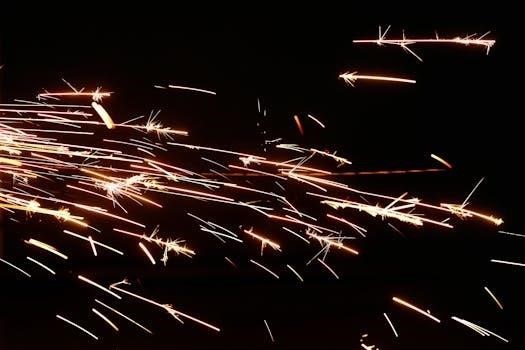
Warranty Information
Leviton stands behind the quality and reliability of its motion sensors, offering a comprehensive warranty for added peace of mind. The Leviton motion sensor warranty typically covers defects in materials and workmanship for a specified period, often five years from the date of purchase. During the warranty period, Leviton will repair or replace any defective sensor, free of charge. To make a warranty claim, customers need to provide proof of purchase and follow Leviton’s warranty claim process. This warranty excludes damages caused by misuse, improper installation, or unauthorized modifications. For detailed warranty terms and conditions, please visit Leviton’s official website or contact their customer service.
